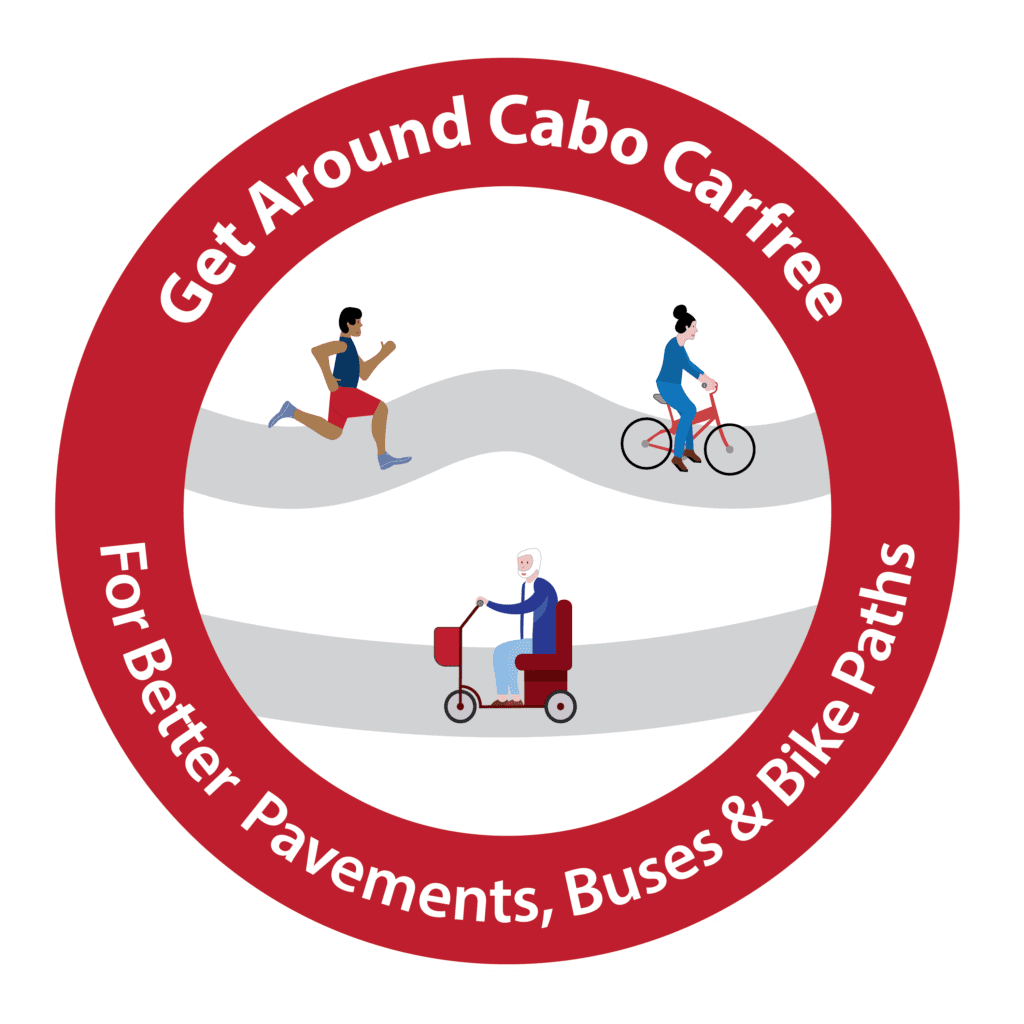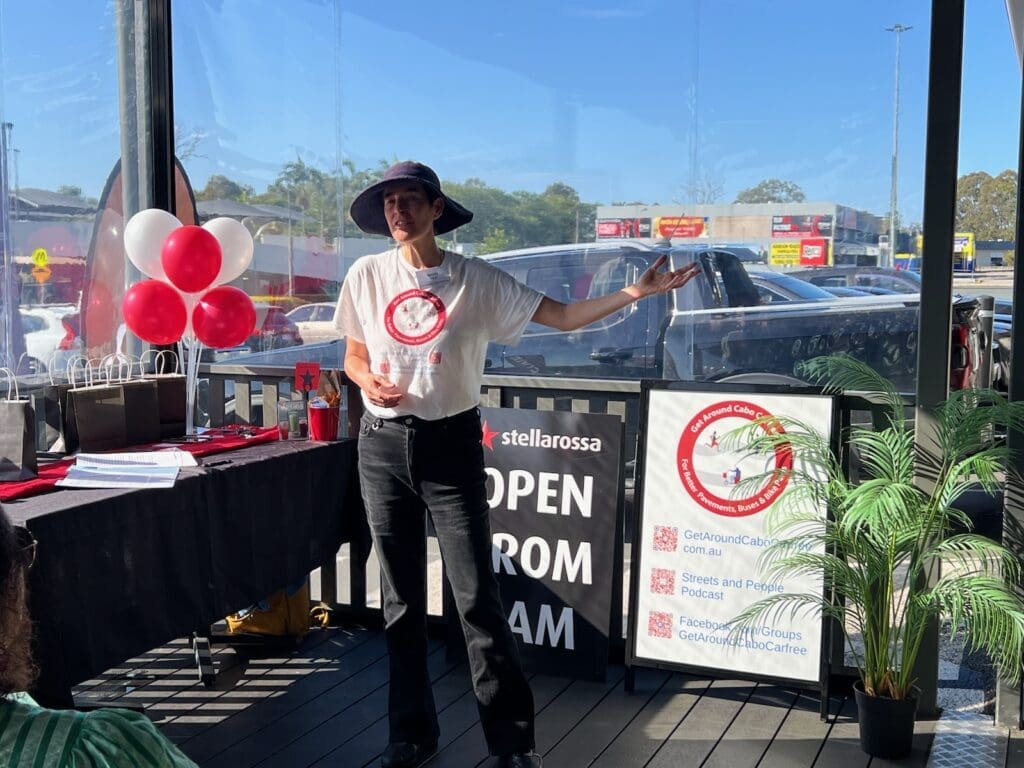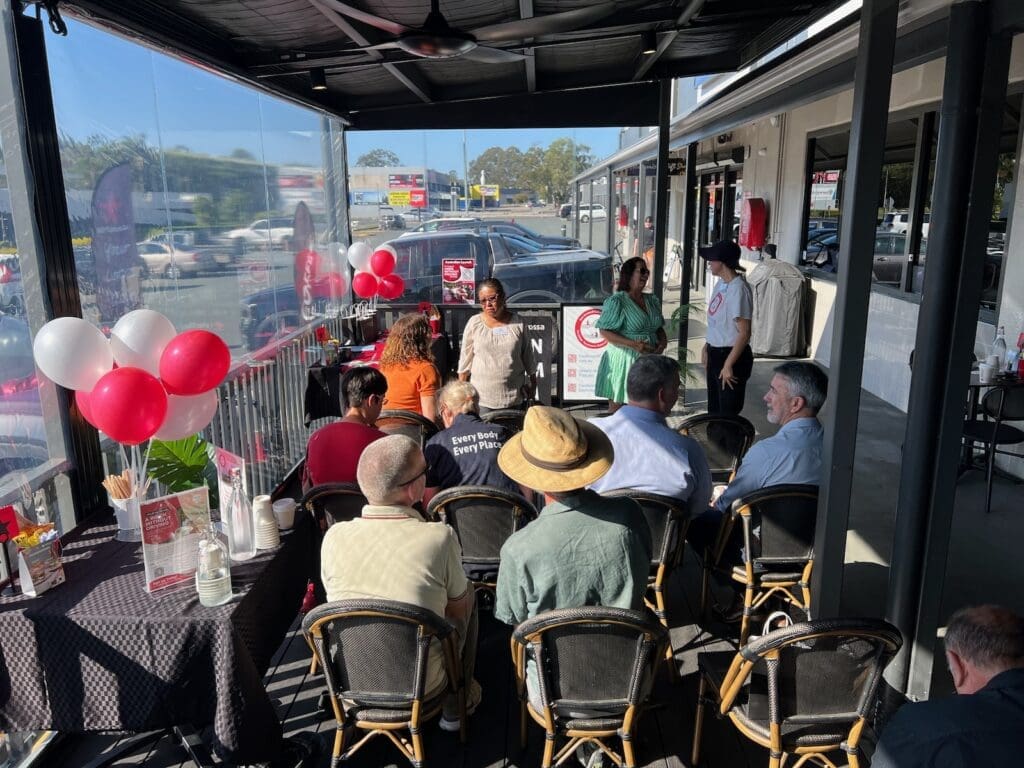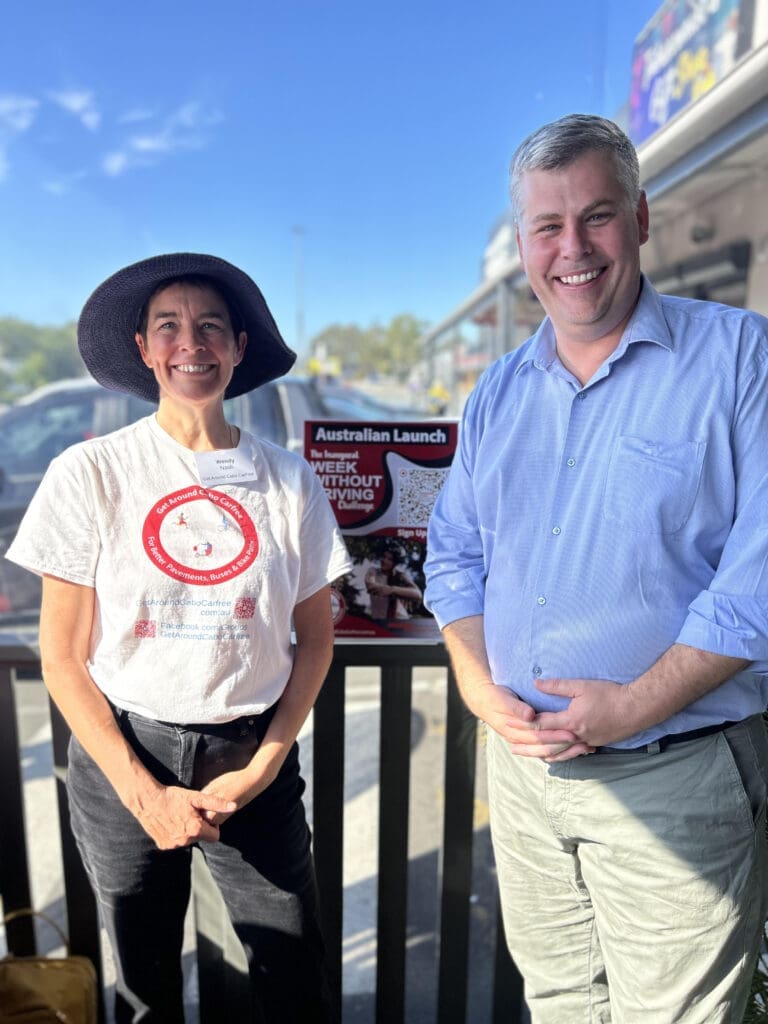An Worldwide Perspective on Week With out Driving

By Ruth Rosas
Week With out Driving has grown from an initiative getting elected officers from Washington state to take part to now having worldwide contributors. Not too long ago, we related with Wendy Nash from Get Round Caboolture: Extra transport choices, much less problem. Wendy determined to deliver Week With out Driving to Queensland Australia, and we sat down along with her to talk about what impressed her, the challenges of organizing in a peri-urban neighborhood and the way she’s utilizing the Week With out Driving to spark change in an Australian context and why it’s so necessary to nondrivers all over the place.

A Dialog with Wendy Nash
Ruth Rosas (RR): Wendy, thanks a lot for becoming a member of us! To begin, might you inform us your identify, the place you’re from, and what your group does?
Wendy Nash (WN): My identify’s Wendy Nash, and I at present reside in Caboolture, which is correct on the city fringe of Brisbane, in Queensland, on the east coast of Australia. I wasn’t raised right here, I’ve lived in Europe and in Sydney, so once I moved to Caboolture, I used to be actually shocked by the bus service. It’s a 10-minute drive to some locations, however 40 minutes by bus, and I simply puzzled, ‘What do individuals who can’t drive do?’ That’s why I began this work, to focus on the challenges nondrivers face and to discover methods to make issues safer and extra accessible.
RR: What function do you assume neighborhood performs in making options to driving extra accessible?
WN: I feel we vastly underestimate the affect of the neighborhood on council and State authorities. For those who’re one individual, you’ve got one vote, and in Australia voting is obligatory, however when you’ve got a bunch of 10 folks, that’s 10 votes, which could unfold to 100. You will have extra scope for affect than you think about. The bottom line is to return throughout as pleasant and unified—mums, incapacity teams, ladies of their fifties, retirees, whomever. For those who deliver completely different voices collectively, you possibly can push for safer streets and higher transport as a result of elected officers begin paying consideration.

RR: Week With out Driving began in Washington State. How did you hear about it?
WN: It was Anna Zivarts’s e-book, When Driving is Not an Choice, and a submit on LinkedIn that actually caught my consideration. I believed, ‘That’s what we’d like right here.’ Many individuals don’t understand how difficult it’s when you possibly can’t drive. For those who lose your license otherwise you by no means had one, you out of the blue see how exhausting it may be to navigate day by day life. That’s what impressed me to start out Australia’s model of the Week With out Driving.
Week With out Driving in Australia
RR: What was it like internet hosting a Week With out Driving in Australia?
WN: We had our official launch, and one among our State MPs deliberate a day with out driving. He missed his bus instantly, which meant he needed to stroll again, after which schedule further time to stroll to appointments or carpool. He instructed me later it took approach longer than he thought. It was inconvenient, however he additionally loved having time to replicate. By the tip of the day, he actually bought it, and it modified his perspective on how a lot we’d like higher public transport.
RR: You talked about folks’s sturdy reactions to limiting driving. What’s been your neighborhood’s response?
WN: I’ve had some damaging responses. Driving can really feel nearly like an habit, you are taking it away and folks get upset. However others discovered it actually attention-grabbing. I had somebody come as much as me and say, ‘I heard about your Week With out Driving… what a fantastic concept!’ I feel it helps when folks perceive that 3 or 4 in each 10 folks is perhaps nondrivers, whether or not they’re youngsters, older adults, or simply can’t afford it. Realizing it’s not only a fringe difficulty makes them extra supportive.

RR: What’s your imaginative and prescient for increasing Week With out Driving in your area?
WN: I need to see a number of small neighborhood teams throughout Queensland do it collectively. Queensland is big—concerning the measurement of Alaska—so that you want native hubs, not only one large occasion. I additionally inform folks: you don’t must do the entire week. For those who simply spend a day strolling round your neighborhood, noticing sidewalks or how lengthy you must wait to cross close to a faculty, that’s progress. For those who don’t do something, nothing adjustments. However by doing even a bit, you contribute to a much bigger shift.
RR: Any final recommendation for somebody contemplating Week With out Driving for the primary time?
WN: Don’t really feel pressured to surrender driving for the total week. Deal with consciousness, possibly you trip the bus as soon as or stroll a couple of blocks you often drive. Discover the velocity of site visitors, what number of secure crossings you’ve got, or the noise degree. Even signing up and reflecting in your neighborhood could make an enormous distinction. When folks present up, it sends a message that nondriver points matter.

If you need to be taught extra about Wendy’s work, hold a watch out for her podcast, Streets & Folks, the place she hosts inspiring conversations with visitors from everywhere in the world on accessible transit, decrease velocity limits, community-led change, all aimed toward reimagining mobility in ways in which profit everybody. You too can discover Get Round Caboolture on Fb the place she shares inspiring updates concerning the constructive adjustments taking place worldwide. The web page is personal to keep up a centered, uplifting, and spam-free atmosphere, in addition to LinkedIn!
Wendy’s phrases remind us how highly effective change usually begins with a small shift in perspective and mindset. By harnessing the collective energy of teams, momentarily experiencing firsthand day by day journey as a nondriver, and recognizing that numerous people from kids to older adults can’t drive, we will start to remodel our streets into safer, extra accessible areas for everybody.